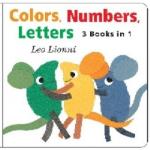|
This section contains 1,517 words (approx. 6 pages at 300 words per page) |

|
From the time they are very young, most children and adolescents play and socialize with friends they meet in various places—their neighborhood, school, church, scouts, sports and other hobbies, and at work. Most of these groups offer positive experiences for children because they fulfill their emotional needs for friends and acceptance, give them structure and support in their lives, and teach them valuable skills such as how to get along with others. Some children, however, associate with groups that are more antisocial in nature—gangs.
There is no one standard definition of what constitutes a gang, but generally, researchers agree with Sandra Gardner's definition of a gang:
An organization of young people usually between their early teens and early twenties, which has a group name, claims a territory or neighborhood as its own, meets with its members on a regular basis, and has recognizable leadership...
|
This section contains 1,517 words (approx. 6 pages at 300 words per page) |

|



